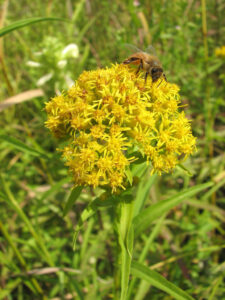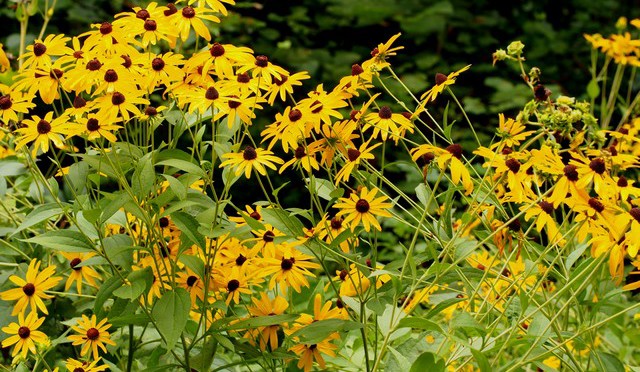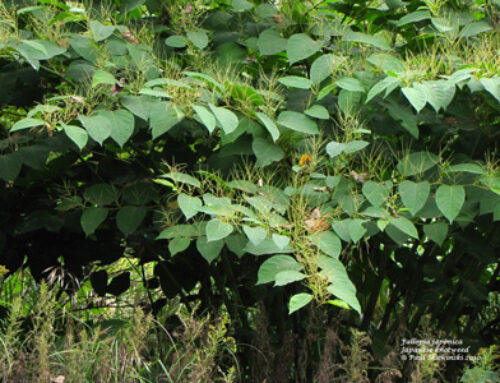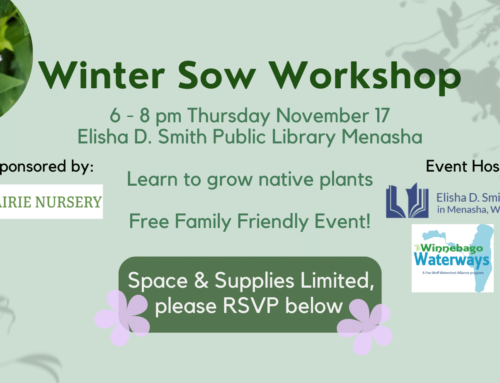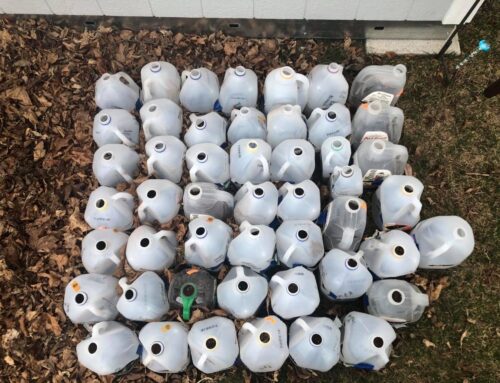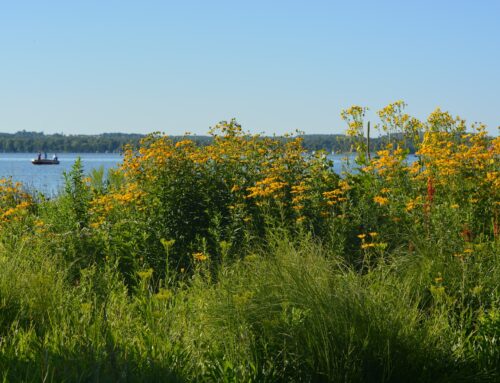One of the things we’ve heard over the last two years is that once native plant projects are installed, that it can be hard to continue to identify the plants present. In April, we starting creating lists of flowers that could be blooming in your native plant project. This list can also be used to help you plan your next native plant project. We have the ability to have plants blooming in our gardens from April to October, so why not make it happen?
Due to the high number of plants that start blooming in July, we are going to focus on shoreline plants and plants that would succeed in a rain garden this month.
Sun definitions
Full sun: gets at least 6 hours of direct sunlight
Partial sun: gets three to six hours of sun exposure
Shade: less than three hours of sun exposure
Soil definitions
Wet: Saturated year round
Wet-mesic: Seasonally saturated, tends to dry in summer
Mesic: Medium moisture, well-balanced
Dry-mesic: well-drained
Dry: excessively drained
Yellow Giant Hyssop Agastache nepetoides
Yellow giant hyssop likes soils ranging from wet mesic to dry mesic. It grows to be 6 feet tall, hence the name giant hyssop. Yellow giant hyssop likes full to partial sun and will attract, birds, including hummingbirds, bees, and butterflies. You will find it in flower from July to October.
Purple Giant Hyssop Agastache scrophulariaefolia
Everything is the same to yellow giant hyssop except this one says it is deer and rabbit resistant.
Nodding Pink Onion Allium cernumm
Nodding pink onion is a great addition to any garden. It is low growing, getting no taller than 2 feet. Nodding pink onion grows well in wet-mesic, mesic, and dry-mesic soils and grows best in full to partial sun. It will attract butterflies as well.
Big Bluestem Andropogon gerardii
Big bluestem is a gorgeous grass that grows to be seven feet tall. It likes all soil types but wet and can be a great texture addition to your rain garden. Big bluestem needs full to partial sun and attracts birds.
American Spikenard Aralia racemose
This native shrub likes to grow in moist areas, preferring wet, wet-mesic, and mesic soils. America spikenard grows up to four feet tall, prefers full to partial sun and attracts birds.

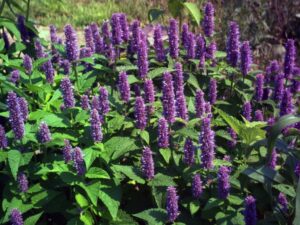
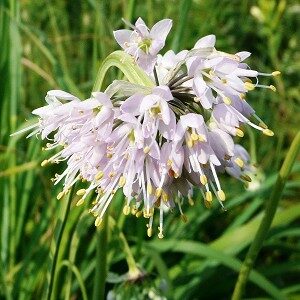
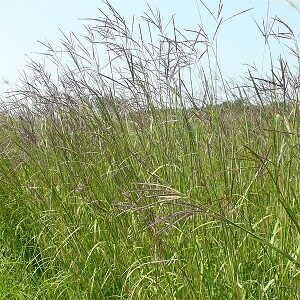
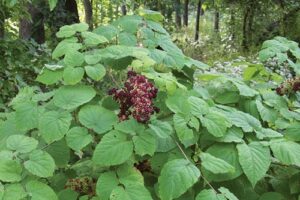
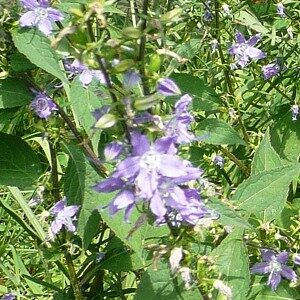

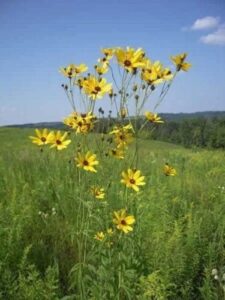
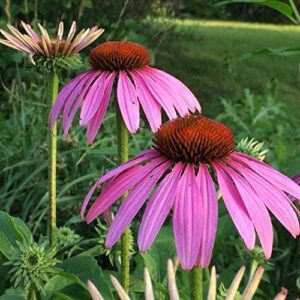
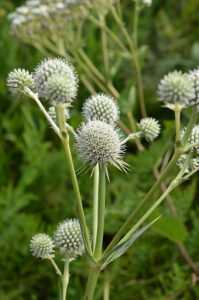
American Bellflower Campanula americana
American bellflower, also known as tall bellflower, has pretty blue flowers that can be found blooming July through October. It grows to be five feet tall and grows best in part sun to shade and in wet-mesic, mesic, and dry-mesic soils. American bellflower attracts hummingbirds, along with other birds, and butterflies.
Turtlehead Chelone glabra
Turtlehead is a good addition to shorelines, preferring wet and wet-mesic soils. It likes full sun and grows to be 5 feet tall. The cream colored flowers of turtlehead will attract all sorts of wildlife including bees, butterflies, and birds.
Tall Coreopsis Coreopsis tripteris
Tall coreopsis, like the other coreopsis species, have bright yellow flowers. This species grows to be seven feet tall, enjoys full to partial sun, and wet-mesic, mesic, and dry-mesic soils. It will attract birds and bees, is deer resistant, and makes a great cut flower.
Purple coneflower Echinacea purpureum
Purple coneflower is a favorite among gardeners. Found blooming in July and August, purple coneflower attracts birds, including hummingbirds, bees, and butterflies. Purple coneflower is deer resistant and makes a great addition to any rain garden. It prefers wet-mesic, mesic, and dry-mesic soils and grows to be 4 feet tall.
Rattlesnake master Erygium yucciflolium
Rattlesnake master is a favorite of Connecting Our Waters. It has cool white flowers that grow as a ball and has such a fun name. Rattlesnake master likes wet-mesic, mesic, and dry-mesic soils where it can grow to up to four feet tall. It grows best in full sun and attracts bees and butterflies.
Joe Pye Weed Eupatorium maculatum
Joe pye weed and its pink flowers can be found in bloom from July to September. It is a great plant of shoreline projects and rain gardens alike, preferring wet and wet-mesic soil. Joe pye weed can grow anywhere from 4-6 feet. It grows best in full to partial sun and attracts birds, bees, and butterflies and is deer resistant.
Marsh Blazing Star Liatris spicata
As its name suggests, marsh blazing star enjoys wet, wet-mesic, and mesic soils. It prefers full to partial sun and grows to be four feet tall. Marsh blazing star is a wonderful addition to rain gardens, and attracts butterflies, birds, and even hummingbirds.
Cardinal Flower Lobelia cardinalis
Cardinal flower adds a pop of red to shorelines and rain gardens. It prefers wet and wet-mesic soils and full to partial sun. Cardinal flower will grow to be three to five feet tall and is deer and rabbit resistant. Along with being great in rain gardens, it attracts butterflies and birds.
Indian Tobacco Lobelia inflata
Most of the plants listed in this July edition of “Learn your native plants” have been very tall; Indian Tobacco is a great option if you are looking for something a little shorter. Growing to be about two feet tall, it likes full, partial and shaded areas. Indian tobacco grows best in wet-mesic, mesic, and dry-mesic soils and attracts bees while being deer resistant.
Great Blue Lobelia Lobelia siphilitica
This blue flowered plant can be found in bloom from July to September. Great blue Lobelia enjoys full to partial sun, and wet, wet-mesic, and mesic soils. This plant makes a great addition to both rain gardens and shorelines. Great blue Lobelia grows to be about two feet tall and attracts butterflies, bees, and birds, especially hummingbirds.
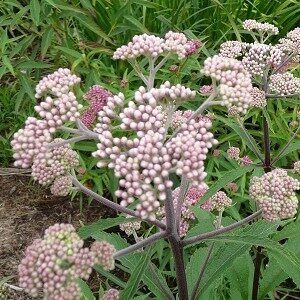
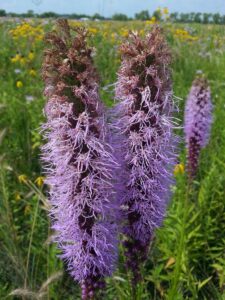



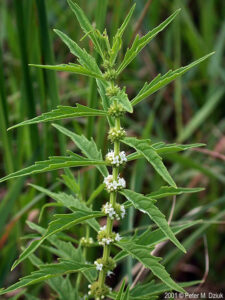
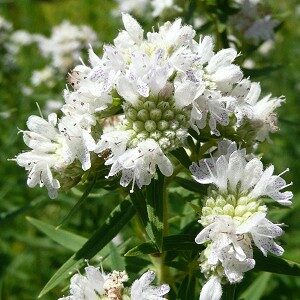
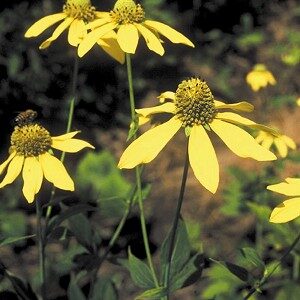

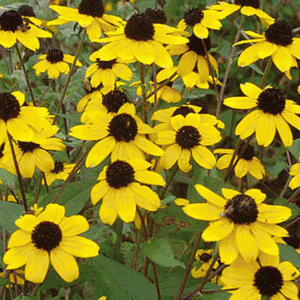
Water Horehound Lycopus americanus
Water horehound is a wonderful rain garden plant. It grows to be two feet all, likes full to partial, and thrives in wet and wet-mesic soils.
Mountain Mint Pycnantheum virginianm
Mountain mint can be found in bloom from July to September in areas with wet, wet-mesic, and mesic soils. It likes full to partial sun and grows anywhere from 1-3 feet tall. Mountain mint’s white flowers will attract butterflies and bees. It is a great addition to rain gardens too.
Wild Golden Glow Rubeckia laciniata
Wild Golden Glow enjoys all sun types if there is wet-mesic or mesic soil. It grows to be 7 feet tall while being deer resistant and attracting birds and butterflies. Wild golden glow is another option for your rain garden.
Sweet Black-eyed Susan Rudbeckia subtomentosa
This plant can be found blooming from July to September. Sweet black-eyed Susan prefers full to partial sun and wet-mesic, mesic, and dry-mesic soils. It grows to be 5 feet tall, is rain garden compatible, and attracts butterflies and birds.
Brown-eyed Susan Rudbeckia triloba
Very similar to sweet black-eyed Susan, brown-eyed Susan likes full to partial sun, wet-mesic, mesic, and dry-mesic soils. It grows anywhere from 3-5 feet, can be put in a rain garden, and attracts birds and butterflies.
Cup Plant Silphium perfoliatum
Cup Plant is not for the faint of heart. It grows to upwards of 8 to 10 feet. It likes wet-mesic and mesic soils meaning that it will grow well in rain gardens. Cup plant needs full to partial sun and will attract birds, bees, and butterflies.
Riddell’s Goldenrod Solidago riddellii
Riddell’s goldenrod loves full sun and wet, wet-mesic, and mesic soils. This species of goldenrod grows to be 1-3 feet tall and does great in rain gardens. All of those small flowers on Riddell’s goldenrod will attract bees, birds, and butterflies.
Blue Vervain Verbena hastata
Blue vervain is a delicate, spindly plant with pretty purple flowers. It likes wet, wet-mesic, and mesic soils and full to partial sun. Blue vervain grows to be 3-5 feet tall and can be a great addition to your rain garden or shoreline project. It will attract butterflies and hummingbirds.

